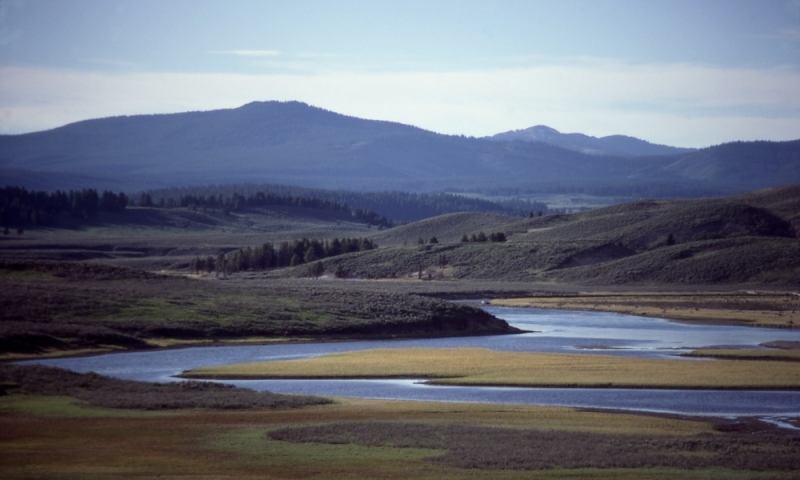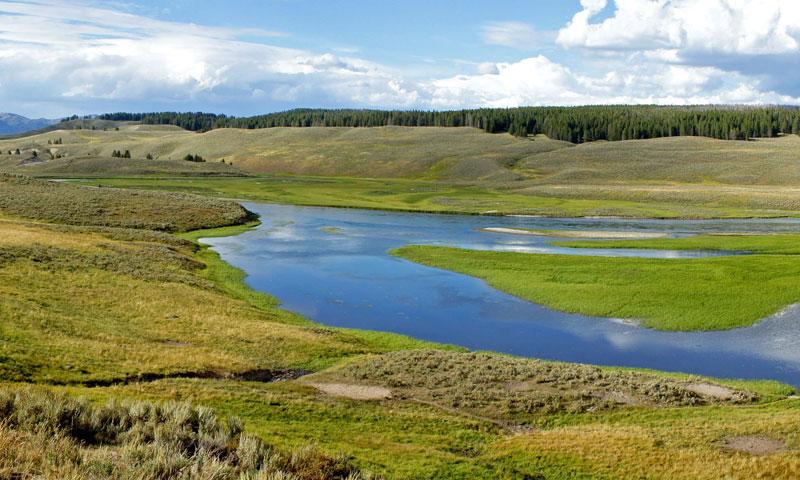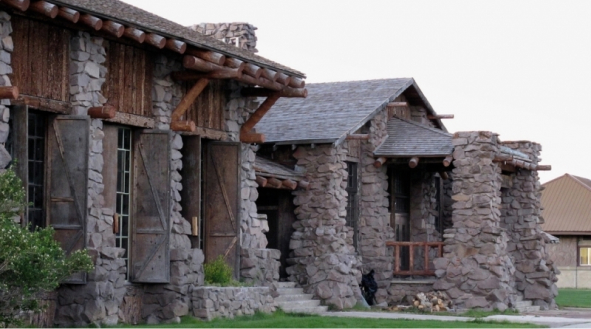- Prime valleys for viewing wildlife like grizzlies, otters, black bears, wolves and bison in their natural habitat.
- Drive through Hayden Valley and pull out at a number of turnouts.
- Hike into Pelican Valley via the Pelican Valley Trail.
- Both valleys are easily accessible from the Fishing Bridge area of Yellowstone
Why should I visit Hayden and Pelican Valleys?
In a way, these valleys mark the heart of Yellowstone, located in the center of the Yellowstone Plateau. Hayden is the largest valley in the park and is, in fact, an old lake bed left over from a huge flooding of Yellowstone Lake thousands of years ago. These two valleys are home to an amazing amount of wildlife including bison, bears, elk, deer, eagles, otters, and wolves.
What's the difference between Hayden Valley and Pelican Valley?
Both the Pelican Valley and Hayden Valley Yellowstone contain some of the richest habitat for wildlife that can be found in Yellowstone. The difference is that Hayden Valley is easily viewable from the comfort of a vehicle while visiting Pelican Valley requires following a hiking trail.
The Hayden Valley above Yellowstone Lake used to be an arm of the lake, and thus offers an open, marshy stretch of land that is attractive to bison, elk, coyotes and birds.
Pelican Valley has broad open lands with forest, also a favorite for grizzlies, elk and deer. The Pelican Valley Trail doesn’t open until early July due to the grizzly bears in the area.
Where are Hayden and Pelican Valleys?
Yellowstone’s Hayden Valley is only six miles north of the Fishing Bridge Junction, in between Fishing Bridge and Canyon Village. You can drive right through Hayden Valley. Pelican Valley is three miles east of Fishing Bridge, accessible via the Pelican Valley Trail:
- Trailhead: 3 miles east of Fishing Bridge, turn onto the gravel road across from Indiand Pond.
- Distance: 6.8 miles round-trip
- Time: 4-5 hours
- Difficulty: Moderate to Easy
- Caution: Bring bear spray













